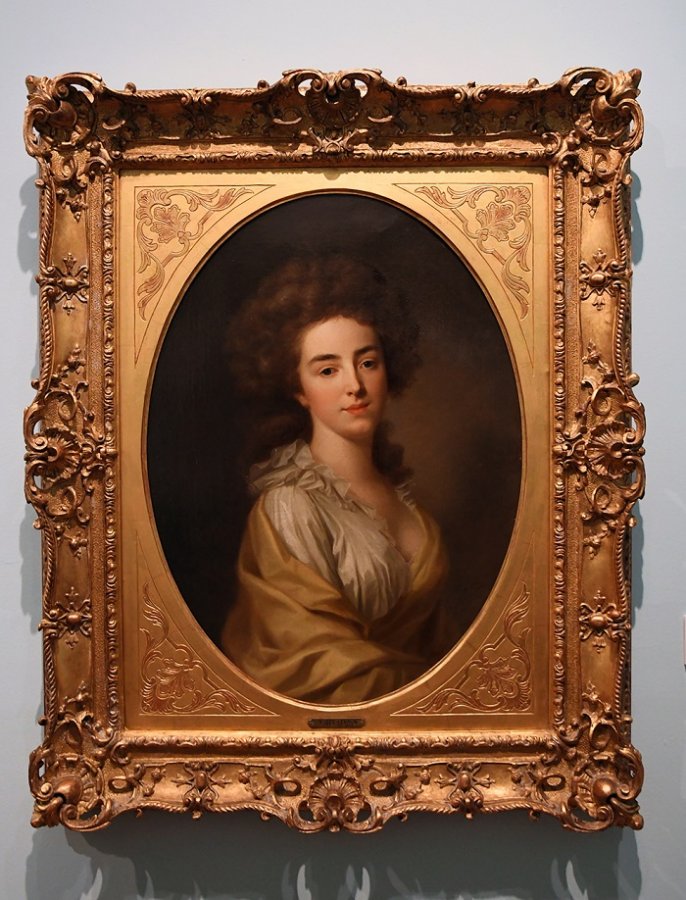Noticias
Until October 7
Rococo exuberance on display at the National Museum of San Carlos
May 20, 2018Rococo art, characterized by mythological scenes, landscapes and portraits that exalted the French crown of the 18th century, is the subject of the temporary exhibition presented at the National Museum of San Carlos (MNSC, for its acronym in Spanish) on Saturday, May 19.
The exhibition Gabinete Rococo is made up of 28 pieces, including paintings, etchings, furniture and a screen, which shows in a general way what one of the most lavish artistic styles was in history, whose function was to adorn all the royal palaces, mainly during Louis XV reign in France.
Between 1730 and 1760, the aristocracy was portrayed by the Rococo, considered to be the new esthetic that promoted new expressions in the plastic art, predominating themes such as nature, asymmetrical ornamentation and the mundane.
The curator of the exhibition, Miguel Ángel Torres, explained in an interview that one of the reasons that stimulated the birth of rococo was Louis XV’s arrival, a figure who showed a lack of interest in politics and an inclination towards court parties.
"These trends helped artists to prefer subtle and sensual details to adorn everyday life with portraits, festive scenes and allegorical paintings that adorned the Palace of Versailles”.
He said that the landscape paintings show the atmosphere of certain places in Europe, while the mythological paintings show happy and sensual scenes that reveal eroticism and sensuality through the figure of woman.
He pointed out that Rococo style was harshly criticized by the Enlightenment, due to the superficiality of the themes portrayed by the artists close to the royal court, and for being at the service of the crown and the bourgeoisie, whose ideals were opposed to those of freedom, reason and equity proposed by the encyclopedics.
"The Rococo witnessed the beginnings of the French Revolution, a movement that paralyzed the whole country and a large part of the European continent. Its color palette is lighter with more vivid colors, which are very important characteristics”.
The collaborator of the venue located in Puente de Alvarado highlighted the presence of artists such as Élisabeth Vigée Le Brun, Francois Boucher and Jean-Honoré Fragonard, the main exhibitors of this artistic trend whose concept originated from the words in French rocaille (stone) and coquille (shell).
Among the pieces on display is the screen Fable Scenes, recently acquired by the Soumaya Museum and loaned for the exhibition. "It is a piece that comes from northern Europe, specifically Austria, which required some restoration work," he said.
Of particular note were: The Coquettish and the Young Man by Jean-Honoré Fragonard, one of the most important pieces of the MNSC, donated by an American museum, as well as the two etchings Mozart in Vienna by Jean Battiste Alfred Cornilliet and Gallant Scene, by an unknown artist.
"These last two works are from the 19th century, after the Rococo period, but they help us to highlight the gallant scenes of the first half of the 18th century. There are portraits that show a lot of what that time was like and landscapes with human figures where you can see the outline of the characters and what there is at the background”.
Miguel Ángel Torres highlighted that this is the first exhibition of the National Museum of San Carlos about the Rococo, in which 20 pieces from the collection of the building are exhibited, as well as works lent by the Soumaya Museum, the Franz Mayer Museum and the Pérez Simón Collection.
The exhibition Gabinete Rococó, refers to the pictorial movement where forms inspired by nature, mythology, naked bodies, oriental art and especially gallant and romantic themes predominate, will be on display at the Museo Nacional de San Carlos until October 7 2018.
The MNSC is located at Puente de Alvarado No. 50, Colonia Tabacalera. Hours: Tuesday to Sunday from 10:00 to 18:00. General admission: $45. Sunday, free entry.
Mexico,Distrito Federal
